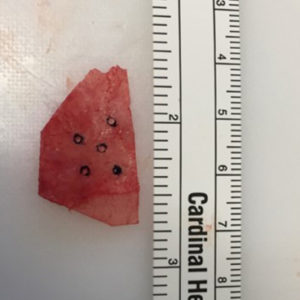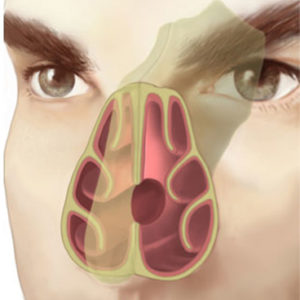Nasal septal deviation is one of the primary causes of nasal obstructions. The septal deviations can interested caudal, dorsal or both caudal and dorsal segments. The aim of this paper is to suggest a suitable diagnostic work-up of the nasal obstruction and describe some technical surgical procedures that can be used for different nasal septum… [Read More]
Septal Surgery
Maximizing the septal graft: use of osteo-cartilaginous septal graft in rhinoplasty
Introduction The nose is a complex structure comprised of a bony-cartilaginous scaffold encased in a soft tissue envelope. These different tissue consistencies work intimately to develop the structure of the nose. In rhinoplasty, establishing form and function of this complex structure often requires grafting to the existing foundation. Conventionally, septorhinoplasty techniques often employ autogenous cartilaginous… [Read More]
Pediatric Septoplasty
Introduction While septoplasty is a commonly performed operation in adults, its use in children is less frequent and controversial. Pediatric Septoplasty is also performed by a pediatric ENT specialist with unique training and equipped to handle an array of issues that arise when treating babies, children, and teens. Pediatric septoplasty was described as early as… [Read More]
Septoplasty and Turbinate Surgery
When a patient requesting rhinoplasty also complains of nasal obstruction, it is critical to accurately diagnose the cause. The author reviews diagnostic procedures, including anterior rhinoscopy, nasal endoscopy, and coronal-sinus computed tomography scan. He discusses technical aspects of septoplasty and turbinate surgery, which address common causes of nasal obstruction, emphasizing traditional and endoscopic septoplasty, septoplasty… [Read More]
Powered Instrumentation for Rhinoplasty and Septoplasty
Daniel G. Becker, MD, Stephen S. Park, MD, FACS, and Dean M. Toriumi, MD Advances in instrument design are guided by the desire to achieve a surgical maneuver more efficaciously and accurately, such as through the use of finer rasps and smaller osteotomes. Powered instrumentation is introduced to improve precision and technical ease while minimizing… [Read More]
Extracorporeal septorhinoplasty for the twisted nose
Abstract Correction of the severely twisted nose is one of the greatest challenges in septorhinoplasty. Both functional and aesthetic problems arise, and standard septoplasty and/or rhinoplasty techniques are rarely successful for such severe deviations’. We describe our technique for extracorporeal septoplasty, which may or may not be combined with rhinoplasty techniques. We use polydioxanone foil,… [Read More]
Treatment of the Caudal Septum
Although caudal septum treatment may appear as an auxiliary procedure to the novel surgeon,its inherent difficulties characterize this anatomical district as one of the most challengingin the nasal region. The nasal septum has a great influence on the global shape of the nose because it is strictly connected to all the bone and cartilage structures… [Read More]
Repair of Septal Perforations in Revision Septoplasty
Nasal septal perforations can be problematic to patients and challenging to surgeons. The perforated nasal septum often has obliterated surgical tissue planes that may be difficult to dissect. Although the literature suggests numerous techniques for management and repair, a more limited number of techniques have achieved widespread favor. In this chapter, we provide an overview… [Read More]
Septal Perforation
A perforation of the nasal septum is considered a continuity defect in any bone or cartilage portion of the septum, with absence of the mucoperichondral or mucoperiosteal lining. It is often asymptomatic, but it may give rise to multiple uncomfortable symptoms that eventually lead patients to seek help. (Fig. 1) The diagnosis and etiology of… [Read More]








